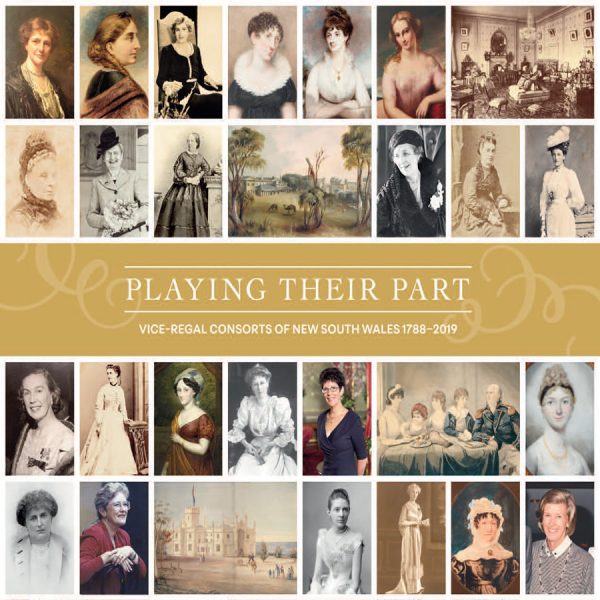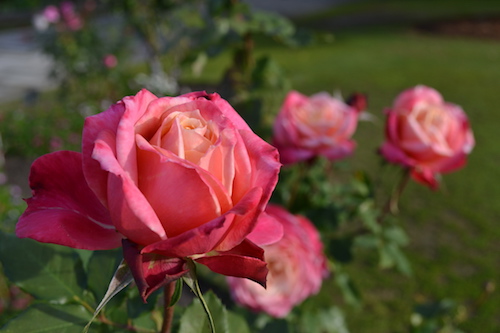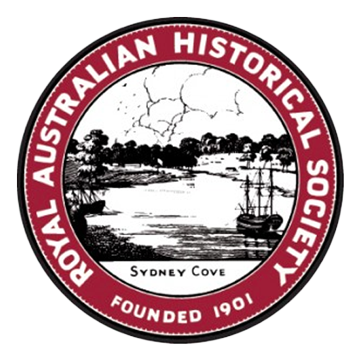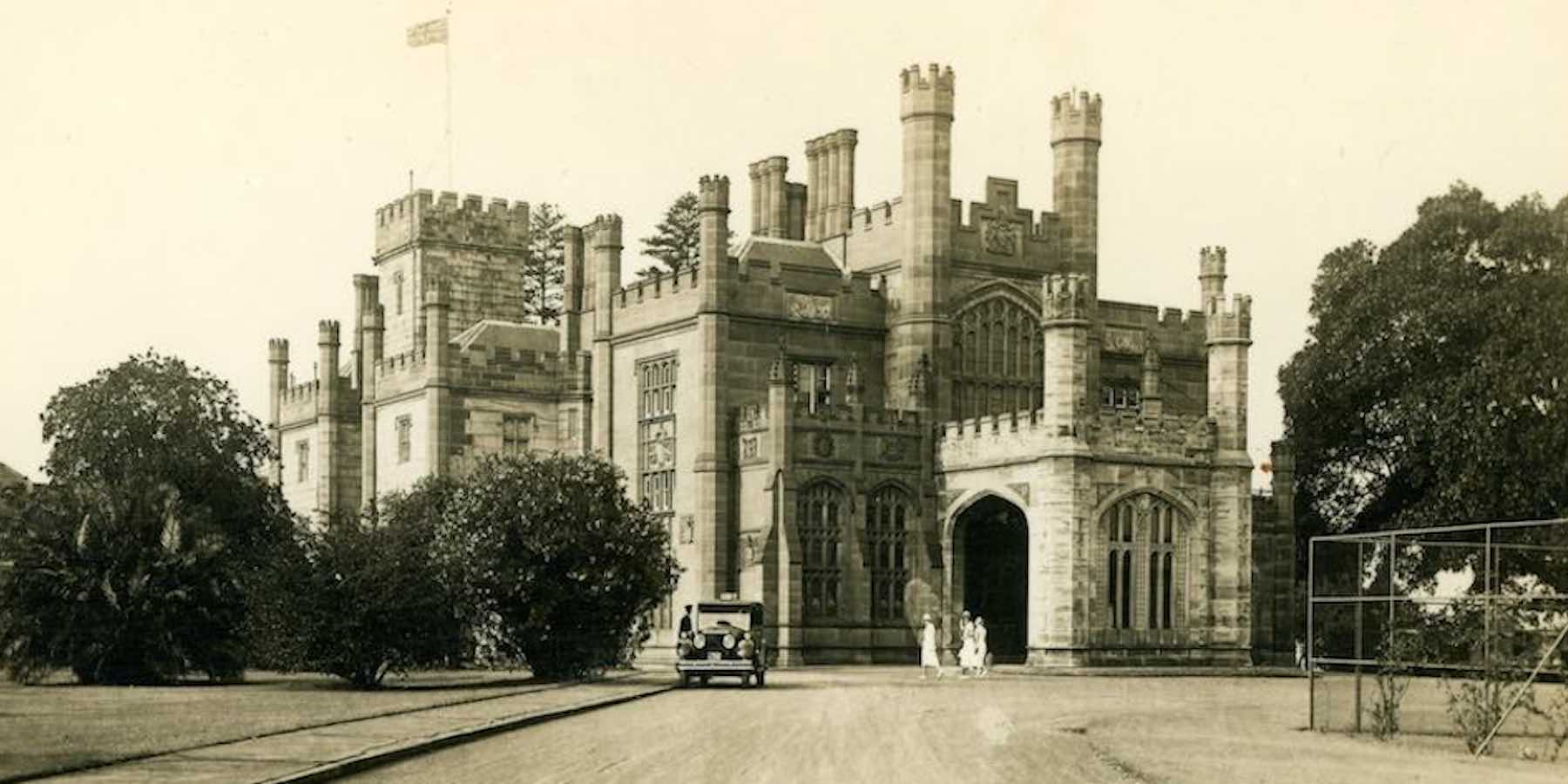Playing Their Part: Vice-Regal Consorts of NSW
Playing their Part: Vice Regal Consorts of New South Wales, 1788–2019 examines the lives of the women (and one man) who were the wives, daughters, sisters (and husband) of the governors of New South Wales over the past two hundred and thirty years. In 2020 the RAHS published the stories of the thirty-eight consorts. Their lives were researched and written by twenty-two dedicated volunteer authors whose commitment, and that of the three volunteer editors (Joy Hughes, Carol Liston and Christine Wright), has resulted in a publication that adds to the understanding of the consorts’ service and survival. Thank you to all our contributors who willingly gave their time to research and write the biographical entries. Read the RAHS President’s foreword.
Learn more about the book from the dropdown below
Your Title Goes Here
Playing Their Part: The Book
Joy Hughes, Carol Liston, and Christine Wright (eds), Playing Their Part: Vice-Regal Consorts of New South Wales, 1788-2019, Sydney: Royal Australian Historical Society, 2020.
The consort is the companion to the governor, a position usually filled by the governor’s wife (or more recently the governor’s husband), daughter or sister. This is not an official role and it comes with no job description, nor salary. Young or old, with or without children, noble or commoner, all consorts found themselves supporting spouse and family, sovereign, empire or nation.
BUY THE PAPERBACK HERE / BUY THE E-BOOK HERE

A 'her-story' rather than a 'his-story'
“In October 2014, on my arrival at Government House, I found that there was not a training course or manual for the role of governor’s wife or consort: neither was there any training protocol. It was a steep learning curve as I tried to understand the role.”
So began Her Excellency Mrs Linda Hurley’s historical journey into the lives and careers of the women who came before her. However, her search turned up very little. Except for the first vice-regal wives to accompany their husbands to the Antipodes, little was known of the women (and one man) who held the role of vice-regal consort in New South Wales and resolved “to uncover their stories, and if possible, publish a ‘her-story’ rather than a ‘his-story’ of the women (and one man) who worked behind the scenes of the governors.”

‘The Governor’s Wife’ rose, commissioned by Linda Hurley, bred by Richard and Ruth Walsh and planted in 2017.
Oral History Project
A companion oral history project supported the research into the lives of surviving consorts, their families, and their staff. The State Library of New South Wales commissioned these interviews.
Professional historian Roslyn Burge conducted the interviews, which provided important information about what life at Government House was like, how each consort managed their public role, and what they contributed to public life in New South Wales.
Other RAHS Publications
The Women of the First Government House 1788-1846
The foundation stone of the first Government House (located on the corner of the Bridge and Phillip Streets in Sydney) was laid on 15 May 1788. During its half-century of operation, it did duty as an official residence, governor’s office, and as a private family home. This article is abbreviated from a talk by Ruth Frappell given on 15 May 2000 to Friends of the First Government House Site to mark the 212th anniversary of laying its foundation stone.
The Women in Arthur Phillip’s Life
Arthur Phillip, the first governor of New South Wales from 1788-1792, married twice. As an aspiring naval lieutenant of 24, he married Charlotte Denison née Tibbott, a wealthy widow of 42. Thirty-one years later, at 55, he married Isabella Whitehead, a wealthy single woman of 43. Neither of these women ever came to New South Wales, but their stories are intertwined with that of the colony’s first governor and shed light on his enigmatic character. Phillip, the ambitious son of a German immigrant and an ordinary Londoner, chose to marry two ‘women of fortune’ who remained childless. Their wealth, manorial estates, social position and connections helped make his career a success.
The Lamentable Death of Lady Mary FitzRoy
In Australian historical surveys, the life and work of Sir Charles FitzRoy, the tenth governor of New South Wales, occupies the best part of a column. If there is an entry for his wife, it merely notes ‘FitzRoy, Lady Mary, death of’. Yet the ‘lamentable’ death of Lady Mary is constantly brought to the historian’s attention because it is often mentioned by contemporary diarists and journalists. This article contends that what made Lady Mary’s death significant and continues to intrigue today is the light it sheds on the changing constructs of masculinity and femininity in the middle of the nineteenth century.
Enid and Elaine de Chair: Government House and Modernism in Sydney
Lady Enid de Chair was the popular and active vice-regal wife of the twenty-fifth governor of New South Wales, Admiral Sir Dudley Rawson Stratford de Chair. Enid’s support of early Australian modernist artists in Sydney and her indefatigable support of women’s clubs and organisations make her a fascinating subject in her own right. She amassed a significant Australian art collection, some of which has returned to Australia in auction sales. An energetic, enthusiastic and adventurous woman – born in South Africa, educated in England, and started her married life in America – she travelled widely with a young family. During their vice-regal tenure, both de Chair women – mother Enid and daughter Elaine – were acknowledged as having played important roles as active, modern, forthright women.
Further Reading and Additional Resources
Governors’ Consorts
Alison Alexander, Obliged to Submit: Wives and Mistresses of Colonial Governors, Hobart: Montpelier Press, 1999.
Marnie Bassett, The Governor’s Lady, Mrs. Philip Gidley King: An Australian Historical Narrative, London: Oxford University Press, 1940.
Sarah A. Bendall, “Lady Mary FitzRoy: The People’s Lady”, St. John’s Cemetery Project (2020), https://stjohnsonline.org/bio/lady-fitzroy/.
Patricia Clarke and Dale Spencer, Life Lines: Australian Women’s Letters and Diaries 1788-1840, North Sydney: Allen & Unwin, 1992.
Bethia Foott, Ethel and the Governors’ General: A Biography of Ethel Anderson (1883-1958) and Brigadier-General A.T. Anderson (1868-1949), Paddington, NSW: Rainforest Publishing, 1992.
Catie Gilchrist, “Elizabeth Bourke: A Much-Lamented Lady”, St. John’s Cemetery Project (2019), https://stjohnsonline.org/bio/elizabeth-bourke/.
Marguerite Hancock, Colonial Consorts: The Wives of Victoria’s Governors 1839-1900, Carlton, VIC: Melbourne University Press, 2001.
Rosemary Harmar, Growing up at Government House, Sydney: Angus & Robertson, 1975.
Helen Heney, Australia’s Founding Mothers, Melbourne: Thomas Nelson Australia, 1978.
Helen Heney, Dear Fanny: Women’s Letters to and from NSW 1788-1857, Canberra: ANU Press, 1985.
George Mackaness, The Life of Vice-Admiral William Bligh, R.N. F.R.S. Vol. II, Sydney: Angus & Robertson, 1931.
Violet Powell, Margaret, Countess of Jersey: A Biography, London: Heinemann, 1978.
Anita Selzer, Governors’ Wives in Colonial Australia, Canberra: National Library of Australia, 2002.
Brian Walsh, William and Elizabeth Paterson: The Edge of Empire, Paterson, NSW: Brian Walsh, 2018.
Robin Walsh, In Her Own Words: The Writings of Elizabeth Macquarie, Wollombi, NSW: Exisle Publishing, 2011.
Governors
David Clune and Ken Turner (eds.), The Governors of New South Wales 1788-2010, Annandale, NSW: The Federation Press, 2009.
Vice-Regal Residences
R.F.F. Gillespie, ‘Vice-Regal Quarters: An Account of the Various Residences of Governors of NSW from 1788 until today’, Journal of the Royal Australian Historical Society 60, pt. 4, 1974.
Rollo Gillespie, Viceregal Quarters: An Account of the Various Residences of the Governors of NSW from 1788 until the Present Day, Sydney: Angus & Robertson, 1975.
Jane Kelso, ‘The First Government House’, Sydney Journal 5, no. 1 (2016): 56-68.
Helen Proudfoot, Old Government House: The Building and its Landscapes, Sydney: Angus & Robertson, 1971.
Helen Proudfoot, Anne Bickford, Brian Egloff and Robyn Stocks, Australia’s First Government House, North Sydney: Allen & Unwin in conjunction with NSW Department of Planning, 1991.
Richard C. Ralph, Hillview: Country Home of the Governors of NSW, Moss Vale: Berrima Historical Society, 1986.
Reginald Robertson, Government House New South Wales, Sydney: Government House Educational Trust, 1995.
Ann Toy and Robert Griffin, Government House, Sydney, Sydney: Historic Houses Trust NSW, 2011.
Frank Walker, ‘The Vice-Regal Residences of New South Wales: “From Canvas Hut to Mansion”‘, Journal of the Royal Australian Historical Society 4, pt. 9, 1919.
Australian Dictionary of Biography
The Australian Dictionary of Biography is Australia’s pre-eminent dictionary of national biography. In it you will find concise, informative and fascinating descriptions of the lives of significant and representative persons in Australian history.
Illustrations
Download a list of the illustrations that were published in the Playing Their Part.
Playing Their Part: Vice-Regal Consorts of New South Wales is available as a paperback book and e-book from our online shop.
Media Enquiries: history@rahs.org.au
Web Design: Phillip Jaworski, RAHS Digital Media

